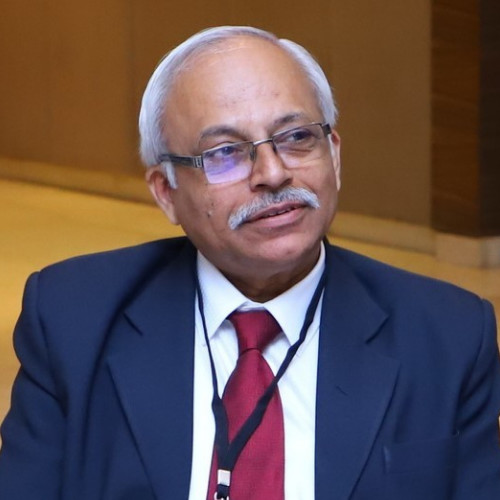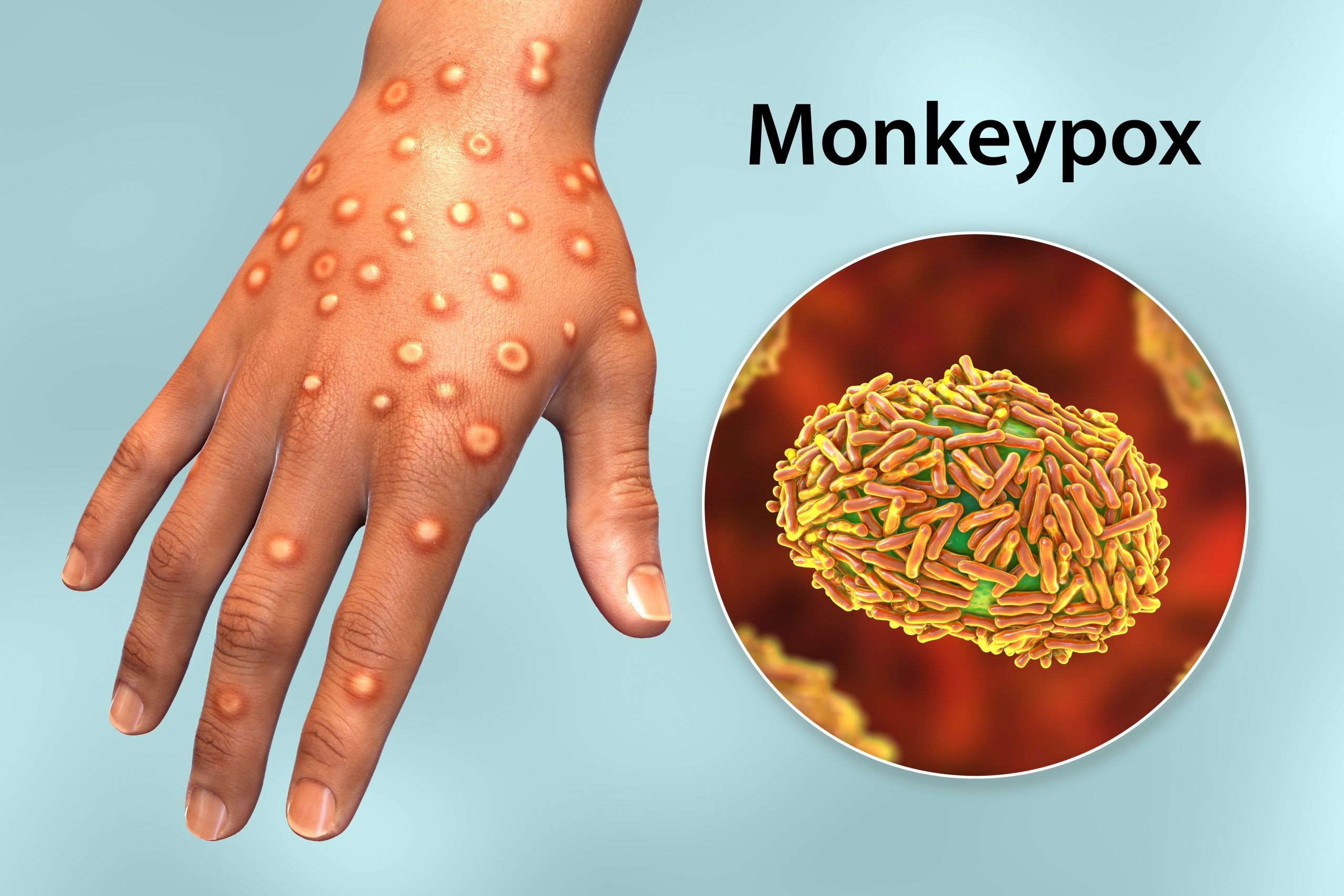Monkey pox: Is a serious threat???

Monkey pox, which is more common in children in its native africa, is showing a different epidemiology outside this continent. The surveillance data from the west suggests that it is behaving more like a sexually transmitted disease like HIV and other sexually transmitted infections…….
By Dr Amitav Banerjee
As Monkey pox cases have been reported and most got detected after returning from other countries. We should know the enemy to combat the psychological warfare. As Sun Tzu, the ancient Chinese warrior philosopher says: “If you know the enemy and know yourself, you need not fear the results of a hundred battles. If you know yourself but not the enemy, for every victory gained you will also suffer a defeat.
If you know neither the enemy nor yourself, you will succumb in every battle…” Knowing the enemy the pandemic of Covid-19, which some honourable experts proclaim is not over yet, made us realize that in contagious diseases we have to fight our battles on two fronts – the disease itself and more importantly, the psychological front which leads to panic right from the policy makers to the people causing much collateral harm.
The name monkey pox itself is a misnomer.
Monkeys and humans are accidental victims of monkey pox. The name has its origins due to detection of the virus from laboratory monkeys in Denmark around 1958. The virus is found more frequently among small animals like squirrels. The virus belongs to the same family as Smallpox virus. The eruptions have some resemblance to Smallpox. However, Monkey pox is much milder and self-limiting with case fatality rate varying between 0-10% in the African continent. Outside Africa it is near zero, perhaps due to better nutrition and access to health care. There is fever, muscle pain, swollen glands, and rashes which have to be differentiated from chickenpox, and other cases of fever with rashes.

In case of Monkey pox human to human transmission is being carried out by intimate contact while respiratory transmission is possible, but not very efficient. The course of the illness is 2-4 weeks. Smallpox had a case fatality rate over 30%. In Africa, Monkey pox cases were identified in the 1970’s in the last phases of smallpox eradication campaign. Heightened surveillance activities in this phase found this enemy, which turned out to be a pickpocket compared to the killer smallpox. The cases of Monkey pox were scattered in Congo and Western Africa. The serologic and virologic studies in the 1980s by WHO in Africa had detected antibodies in very few monkeys.
More frequently, antibodies were found in Gambian rats and elephant shrews. Most of the human cases, around 75% were among poor children who lived close to animals and handled their carcasses. Among household contacts the secondary attack rate was less than 10%. In 2003, Monkey pox infection of humans was identified in the US. This was traced to prairie dogs that were infected from African small mammals imported as exotic pets. Gambian rat, rope squirrel and dormouse from the African shipment of exotic species originating in Ghana were implicated. The biggest ever outbreak of monkey pox outside the African continent began in May 2022. By mid-July 2022, over 8000 cases had been reported from over 35 countries. “Knowledge of the spirit world is to be obtained by divination, the laws of the universe can be verified by mathematical calculations, but the disposition of the enemy is ascertainable through spies and spies alone.” Thus spoke Sun Tzu in ancient times.
However, today spying has scaled up and is termed surveillance both in the military and health settings. Some insights from surveillance data from the European continent give useful insights, which can help us to form strategy against the threat of Monkey pox. The European Union together with UK had reported 6892 cases by first week of July. Majority of cases, 42%, were aged between 31 to 40 years, and interestingly, 99.5% were males. Only around 10% needed hospitalization, and only 3 (0.04%) needed ICU admissions. Interestingly 43% of those affected were HIV positive, and around half had history of other sexually transmitted infections in the past [Allied Forces!].

There were no deaths. Only 0.33% of the cases were health care workers. Genomic studies indicated that the less virulent West African strain was responsible for the outbreak. 3 In UK which had more detailed surveillance, 97% of the cases were homosexual or bisexual men. Of these, 54% had history of other sexually transmitted infections, and 31.8% had 10 or more sexual partners in the last 3 months. Implications for preventive strategy from above epidemiological intelligence. “…just as water retains no constant shape, in warfare there are no constant conditions. One who can modify his tactics in relation to his opponent, and thereby succeed in winning, may be called a heaven born captain” Sun Tzu, in Art of War.
Monkey pox, which is more common in children in its native Africa, is showing a different epidemiology outside this continent. The surveillance data from the West suggests that it is behaving more like a sexually transmitted disease like HIV and other sexually transmitted infections. And, fortunately, there is no fatality yet. Perhaps intimate handling of small animals and carcasses by undernourished African children makes them more vulnerable to both infection and a fatal outcome.
“To fight and conquer in all our battles is not supreme excellence. The skilful leader subdues the enemy without fighting; he captures their cities without laying siege (no lockdowns please!); he overthrows their kingdom without lengthy operations in the field.” “This is the method of attacking by stratagem of using the sheathed sword.” Sun Tzu (Promote condom use among high risk groups). With these insights, our policy makers and our people should not panic. Promotion of condom use and safe sex, avoidance of multiple sexual partners, screening of blood donors, are all practices which we have refined over the years in our fight against AIDS. One thing in the Indian context is that while HIV transmission was more among gay males in the West, in India it was also frequent among people indulging in promiscuous heterosexual behaviour. And in North-East India, particularly Manipur, transmission was common among injection drug addicts.

Keeping these epidemiological factors in mind, we should put in place Monkey pox surveillance among the high risk population as we have for HIV using the existing infrastructure. We should also augment our public health infrastructure so as to make our position unassailable to present and future threats. A self limiting disease with almost zero mortality in the healthy with access to health care as the European data indicate should not be cause for panic or stigma. A good public health infrastructure will serve like a strong army to ward off future threats from emerging and re-emerging diseases without causing panic among policy makers and people leading to knee-jerk reactions and collateral harm.
“The Art of War teaches us to rely not on the likelihood of the enemy not coming, but on our readiness to receive him; not on the chance of his not attacking, but rather on the fact that we have made our position unassailable.” Sun Tzu and lastly, we have come full circle. Modified smallpox vaccine is being promoted to build up immunity against Monkey pox. Edward Jenner looking down from heaven must be amused. Jenner improvised smallpox vaccination by using fluid from the lesions of milkmaids suffering from cowpox another milder cousin of the pox family. Today we are improvising vaccination for another milder cousin Monkey pox using the smallpox vaccine! Edward Jenner must be chuckling on the fragility of humans on earth today going to great lengths to prevent a self-limiting disease. There are hundreds of viruses waiting to be discovered by virologists in the race to promote their careers and vaccine manufacturers, who have tasted success, to promote their vaccines. Do we envisage a future where we will have to take hundreds of vaccines to combat real or imagined threats?
(The author is MD, Post Doctoral Epidemiology and presently, Prof and Head, Department of Community Medicine, Dr DY Patil Medical College, Pune.)

